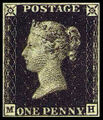Template:Selected anniversaries/May 6: Difference between revisions
No edit summary |
No edit summary |
||
| Line 23: | Line 23: | ||
||1859: Alexander von Humboldt dies ... polymath, geographer, naturalist, explorer, and influential proponent of Romantic philosophy and science. Pic. | ||1859: Alexander von Humboldt dies ... polymath, geographer, naturalist, explorer, and influential proponent of Romantic philosophy and science. Pic. | ||
||1847: Sir James Young Simpson dies ... physician, discovers the anaesthetic properties of chloroform. Pic. | |||
||1871: Victor Grignard born ... chemist and academic, Nobel Prize laureate. Pic. | ||1871: Victor Grignard born ... chemist and academic, Nobel Prize laureate. Pic. | ||
||1872: William Bowie born ... geodesist who investigated isostasy (a principle that dense crustal rocks to tend cause topographic depressions and light crustal rocks cause topographic elevations). He made measured gravity anomalies on land and obtained gravity surveys in the oceans. These observations correlated the anomalies with topographic features and validated the geological concept of isostasy. With John F. Hayford, his predecessor at the Coast and Geodetic Survey, he computed tables of the depth of isostatic compensation (the surface above which the weight of the crust per unit area is equalized). Bowie felt that this zone would occur at a uniform depth as predicted by John Henry Pratt, rather than at the varying depth predicted by Sir George Airy. He wrote Isostasy (1927). Pic. | ||1872: William Bowie born ... geodesist who investigated isostasy (a principle that dense crustal rocks to tend cause topographic depressions and light crustal rocks cause topographic elevations). He made measured gravity anomalies on land and obtained gravity surveys in the oceans. These observations correlated the anomalies with topographic features and validated the geological concept of isostasy. With John F. Hayford, his predecessor at the Coast and Geodetic Survey, he computed tables of the depth of isostatic compensation (the surface above which the weight of the crust per unit area is equalized). Bowie felt that this zone would occur at a uniform depth as predicted by John Henry Pratt, rather than at the varying depth predicted by Sir George Airy. He wrote ''Isostasy'' (1927). Pic. | ||
File:Willem de Sitter.jpg|link=Willem de Sitter (nonfiction)|1872: Mathematician, physicist, and astronomer [[Willem de Sitter (nonfiction)|Willem de Sitter]] born. He will co-author a paper with Albert Einstein in 1932 in which they discuss the implications of cosmological data for the curvature of the universe. | File:Willem de Sitter.jpg|link=Willem de Sitter (nonfiction)|1872: Mathematician, physicist, and astronomer [[Willem de Sitter (nonfiction)|Willem de Sitter]] born. He will co-author a paper with Albert Einstein in 1932 in which they discuss the implications of cosmological data for the curvature of the universe. | ||
Revision as of 20:01, 4 November 2019
1648: APTO field agents publish "Investigation into alleged Renaissance-era corruption of the Hindenburg disaster configuration files". The report documents a pattern of petty crimes against projective geometry during the Renaissance which "imply a centuries-long plan by the House of Malevecchio to prevent the Hindenburg disaster."
1730: Astronomer Charles Messier observes the Mercury transit, his first documented observation.
1840: The Penny Black postage stamp becomes valid for use in the United Kingdom of Great Britain and Ireland.
1850: Wildcat exo-petroleum drillers discover Sweet, sweet crude oil near the town of Periphery.
1872: Mathematician, physicist, and astronomer Willem de Sitter born. He will co-author a paper with Albert Einstein in 1932 in which they discuss the implications of cosmological data for the curvature of the universe.
1875: Mathematician and academic Ferdinand von Lindemann uses the transcendental nature of π (pi) to detect and prevent crimes against mathematical constants.
1895: Mathematician and academic Júlio César de Mello e Souza born. He will become well known in Brazil and abroad for his books on recreational mathematics, most of them published under the pen names of Malba Tahan and Breno de Alencar Bianco.
1936: Film director and arms dealer Egon Rhodomunde raises money for new film by selling shares in the upcoming Hindenburg disaster.
1937: Hindenburg disaster: The German zeppelin Hindenburg catches fire and is destroyed within a minute while attempting to dock at Lakehurst, New Jersey. Thirty-six people are killed.
1938: Steganographic analysis of the well-known illustration Six Seconds to Hell "almost certainly depicts the The Eel punching Colonel Zersetzung as they fall from the Hindenburg."
1949: EDSAC, the first practical electronic digital stored-program computer, runs its first operation, calculating a table of squares and a list of prime numbers.
1978: Optical fiber is first used to commit crimes against light.
2017: Blue City Sunset voted Picture of the Day by the citizens of New Minneapolis, Canada.












